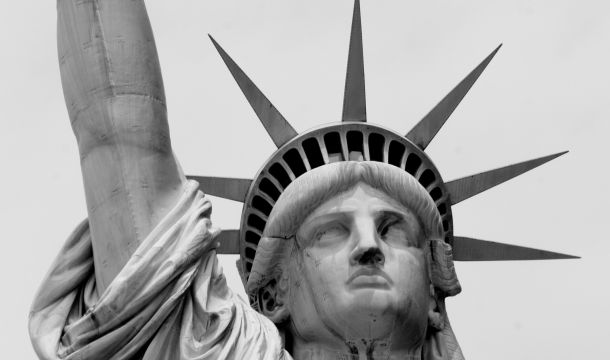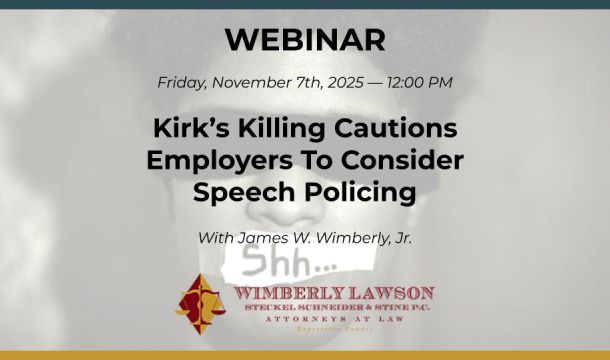Employers Caught in the Middle for Attacks on DEI Programs
As a result of the Supreme Court ruling on affirmative action in college admissions, employers seem to be caught in the middle in the debate over those in favor of or opposed to diversity, equity, and inclusion (DEI) programs that may go too far. There have been lawsuits, shareholder letters and petitions to the Equal Employment Opportunity Commission (EEOC) for both points of view. One lawsuit accuses Starbucks of violating federal law, and its officials of breaching their fiduciary duty to shareholders by embracing policies that violate anti-discrimination law in areas including employment, supplier contracts and executive compensation. The policies of Starbucks reportedly state that it wants at least 30% of its U.S. workforce at all levels to be Black, indigenous or people of color by 2025. It reportedly plans to implement an analytic tool that lets managers see their progress and uses workforce diversity measures to help set executive pay. There are similar cases against Comcast and Amazon alleging their small-business grant programs aiding minorities are discriminatory, apparently causing Comcast to state that its next rounds of grants would be open to all small businesses, not only minority businesses. A lawsuit against Compass Group involves a claim of religious discrimination and retaliation by an employee stating that the company's DEI emphasis conflicted with her sincerely held religious beliefs holding that all people, regardless of race or gender, are created equal. In one case brought by an executive who was fired and replaced with a Black female against Novant Health, a federal jury in Charlotte in October of 2021 awarded him $10 million in damages. The executive apparently convinced the jury that the DEI program's commitment to diversity resulted in discrimination against him, a White man, as part of Novant's efforts to promote diversity in its management ranks. Employers are frustrated by the potential to get accused of discrimination no matter what the company does in regards to DEI programs.
It doesn't help that the government itself is expressing differing views regarding the interpretation and application of the Supreme Court ruling. The EEOC Commissioners themselves seem to be offering conflicting advice. One Commissioner states that the decision does not affect most corporate DEI programs, while another says that lawyers need to give "a hard look at their corporate diversity programs." A dozen Attorneys General sent a letter to Fortune 100 CEOs to caution their use of race in their hiring and recruiting. The response from certain other Attorneys General states that employers can maintain DEI programs by adjusting their recruiting practices, including promotion or retention policies, and using leadership programs.
It is submitted that there would seem to be at least a starting point addressing these issues. The starting point is using protected classes, such as race, to make employment decisions is illegal under federal law. The application of this concept is that DEI programs that are considered to be "racial quotas" and/or "explicitly race-based practices" are inappropriate and illegal. Nevertheless, it is generally believed that setting "aspirational goals" based on demographics are not illegal. DEI programs can be designed to promote workplace diversity without amounting to illegal racial quotas and preferences. This concept has been written into our federal contractor rules and is generally considered appropriate. The concept is to implement diversity programs that seek to insure workers of all backgrounds are afforded equal opportunity in the workplace.
Some would argue that this concept is easier said than done. The terminology in DEI programs needs to be carefully reviewed to be consistent with these principles. For example, pledging to increase certain protected classes looks like a type of racial balancing, so employers should reframe the issue as more of an aspiration. Interpreting the Supreme Court ruling as to higher education, the Biden Administration has issued guidance that it is appropriate to have a goal of a diverse student body and to use targeted outreach in recruiting initiatives. The interpretation is that schools cannot provide targeted groups with preference in the admission process itself, which as applied to employers means the hiring process itself. However, the Administration advises that certain types of application elements or standardized testing may be reviewed to ensure there is no adverse impact on protected groups. It is not done to extend preferential treatment but to remove barriers. The interpretation indicates that colleges can continue to collect and analyze demographic data about applicants and admissions, as long as such data are not influencing the admission decisions. The Administration advice also said schools can continue to offer support to under-represented students once they are on campus, to ensure they feel a sense of belonging, such as affinity groups, as long as their activities are open to all students regardless of race.
Applying the Administration guidance more directly to employment issues, it would appear there is nothing inherently discriminatory about DEI programs created to help weed out hiring bias, or to attract a wider pool of job candidates, and to retain an inclusive workforce as long as the individual decisions are not based on race.
The bottom line is that the legality of DEI programs depends on how they are structured and applied. Employers should be cautioned that dangerous fact patterns emerge when candidates not selected for a certain position or employment are told the DEI program has something to do with it. Such comments likely turn a legitimate program into one likely to create lawsuits by the non-selected candidate.
This article is part of our September 2023 Newsletter.
View newsletter online
Download the newsletter as a PDF
Related Content
Get Email Updates

Department of Homeland Security (DHS) is Terminating Family Reunification Parole (FRP) Processes

DHS is Terminating Temporary Protected Status for Ethiopia

Issues Regarding Employee Access to Their Personnel Files

Issues of Employer Access to Employees’ Personal Devices Such as Cell Phones, Etc

Settlement Agreement Wording Can Determine Tax Treatment



